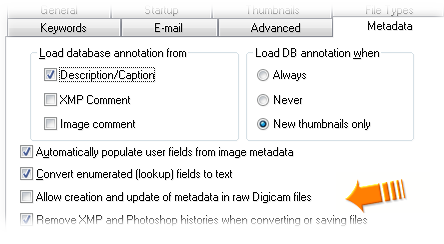
- #THUMBSPLUS 10 MOUSE HOVER THUMBNAIL TURN OFF FULL#
- #THUMBSPLUS 10 MOUSE HOVER THUMBNAIL TURN OFF WINDOWS#
Data Base: Both ThumbsPlus and ACDSee build data bases with Thumbnails, dates, keywords, captions, etc. If you're an experienced user and normally create multiple versions of your favorite pictures and know which one is appropriate to eMail, none of this matters. ACDSee has the advantage that it can eMail directly through a SMTP server without using any eMail program. This works great if you use Outlook Express, but you'll have to experiment if you use another eMail program like I do. Both programs automatically resize selected images and attach them to an eMail message.  Email: For those new to digital photography, this is an important feature because most new users send files that are inappropriate to eMail. You can even select several images and they will all pop into Photoshop or Elements at once.) I found it amusing that when I choose Edit in ThumbsPlus it brings up ACDSee's built-in editor on my system :) as long as the editor you choose is already running the image pops up in it almost instantly. instead I use the Edit drop-down in ACDSee and choose the editor appropriate to each image. Photoshop is almost always running on my machine, but I almost never open files in it. (For serious editing, I use either Photoshop or occasionally Elements because each version seems to have a couple of features that Photoshop doesn't.
Email: For those new to digital photography, this is an important feature because most new users send files that are inappropriate to eMail. You can even select several images and they will all pop into Photoshop or Elements at once.) I found it amusing that when I choose Edit in ThumbsPlus it brings up ACDSee's built-in editor on my system :) as long as the editor you choose is already running the image pops up in it almost instantly. instead I use the Edit drop-down in ACDSee and choose the editor appropriate to each image. Photoshop is almost always running on my machine, but I almost never open files in it. (For serious editing, I use either Photoshop or occasionally Elements because each version seems to have a couple of features that Photoshop doesn't. 
Because it compresses output better than anything else I use the built-in ACDSee Photo Editor 80% of the time. This is not really an issue, because there are lots of good editors in the world, but I really like the ACDSee feature which allows you to pick which editor you use to edit a particular image.įor the simple things we do to most photos: exposure adjustment, cropping, sharpening, and maybe leveling the horizon or removing red eye, ACDSee's built-in editor is great and all you need.
Editing: Although the features talk about editing, ThumbsPlus doesn't seem to have a Photo Editor of it's own. ACDSee also lets you flip using the scroll wheel on a mouse. and the slower your machine, the more you notice the difference. Even on a very fast machine, ThumbsPlus takes roughly a second to load each image that may sound fast, but once you get spoiled. With ACDSee I'm use to flipping through many 3MB images a second, when I start doing this with ThumbsPlus it gets way behind me. ACD Systems has always prided themselves on having the faster viewer around and the newest version of ACDSee can certainly switch images faster than ThumbsPlus. Both programs let you do this flipping among all the images in a folder or selected images. #THUMBSPLUS 10 MOUSE HOVER THUMBNAIL TURN OFF FULL#
Viewing: My personal preference is to view images full screen flipping between them at the press of a key. 
(A trick I use is to organize the order I want to display images using the thumbnail view and then either export that order to other programs using the listing file, or use the batch rename feature to generate names with leading sequence numbers followed by the original name.)

this is a view with no thumbnails, but instead a listing of images along with any details (EXIF, etc.) you specify what's nice is you can save this detailed listing of a folder in a text file. Detail view: probably exists in ThumbsPlus but I can't find it.
ACDSee advantages: Slider to adjust thumbnail sizes. (Personally I usually I usually select the images I want to compare and then flip between them in full screen mode. #THUMBSPLUS 10 MOUSE HOVER THUMBNAIL TURN OFF WINDOWS#
A view-sync mode which creates multiple windows for viewing the selected images.
ThumbsPlus advantages: Mini-thumbnail view with larger thumbnails which pop-up as you cursor over the small ones. Whichever program you use, I highly recommend you customize the toolbars to include your favorite operations. Both have customizable toolbars and provide multiple ways to help you organize your images through moves, copies, drag and drop, etc. Thumbnail Browsing: Both ThumbsPlus and ACDSee give you almost complete control over the way Thumbnails and the associated file information are displayed. For almost 10 years I have used ACDSee for organizing and printing my photos, so this is a comparison of features in the latest version of each (version 7 in both cases). Given that a large group of people I respect use ThumbsPlus for organizing and viewing their digital photos, I thought it was time to consider once again if I should change to it.








 0 kommentar(er)
0 kommentar(er)
